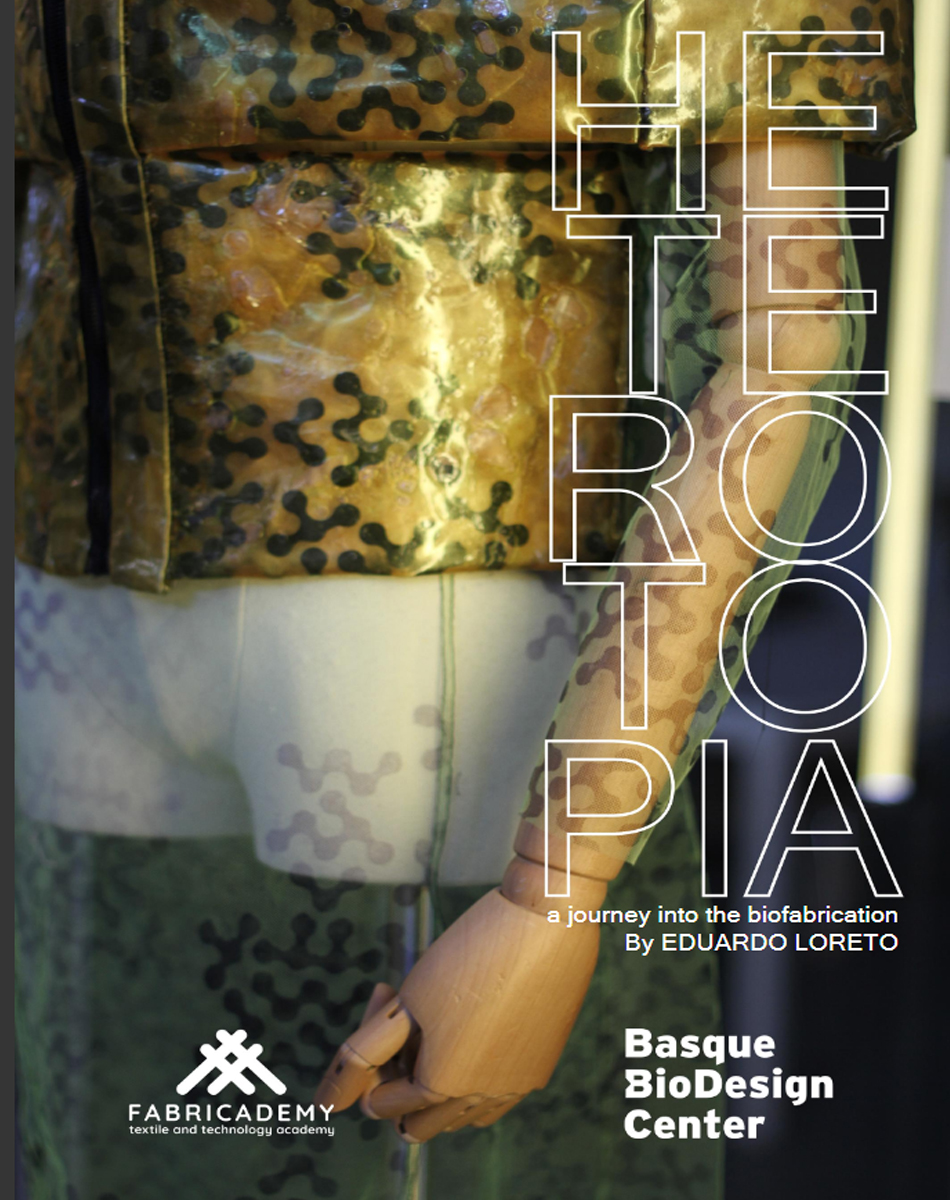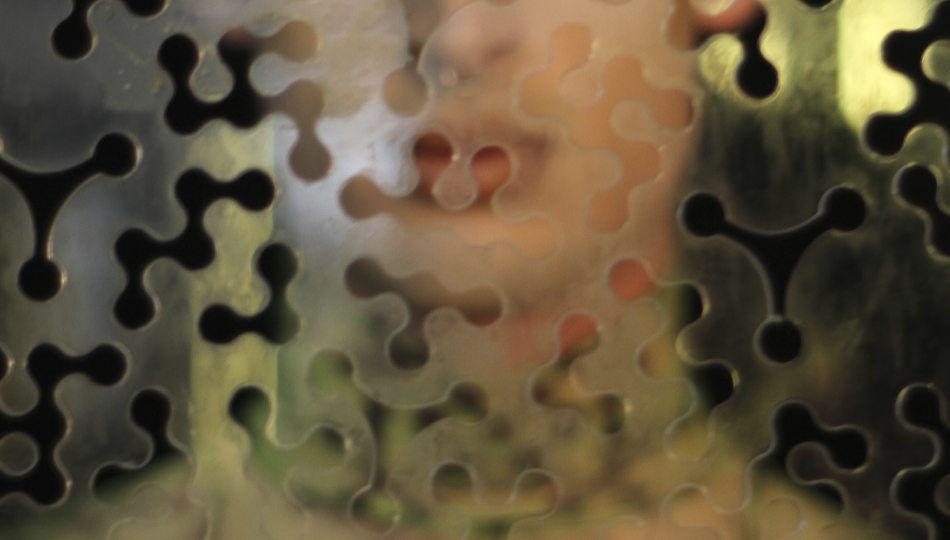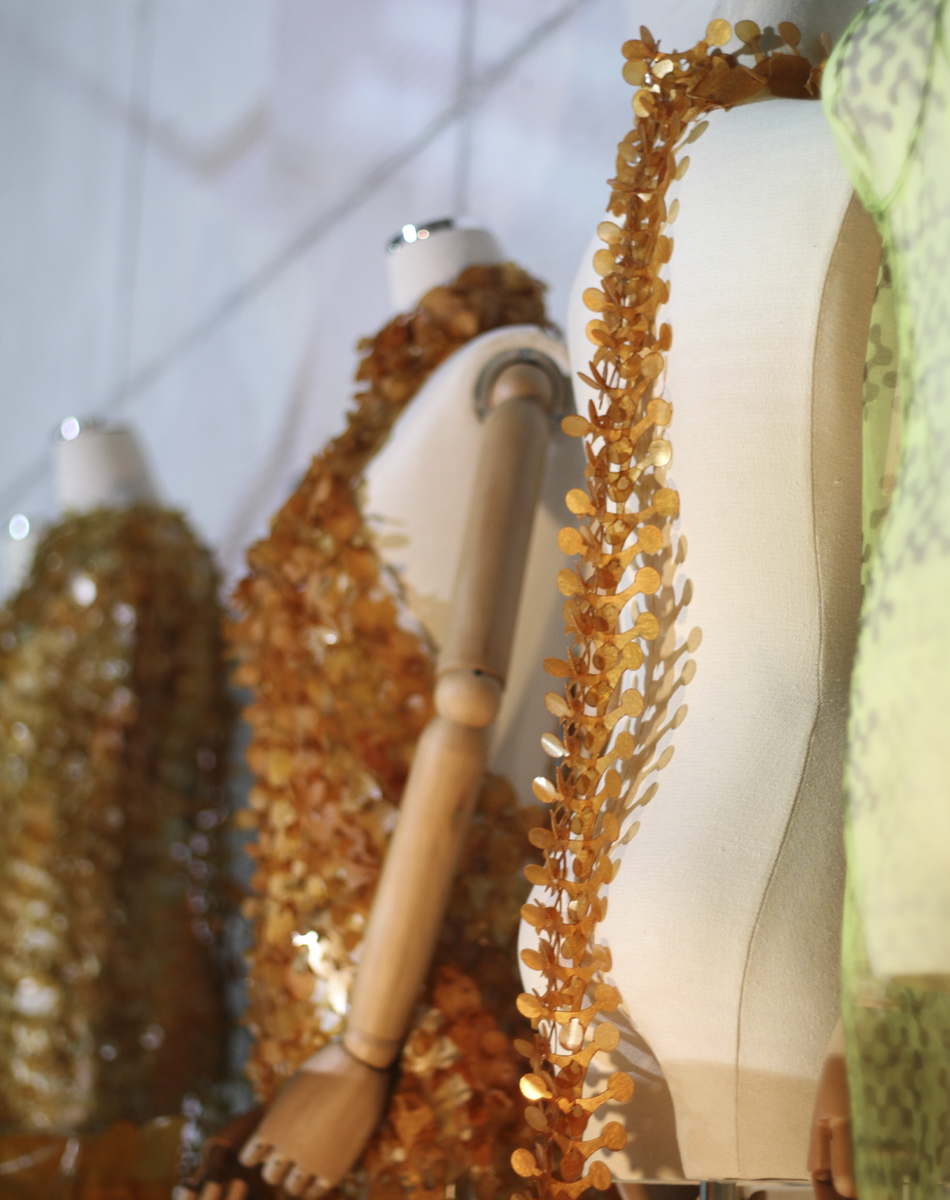Heterotopia¶
This project is a condensed expression of the art of creation and the joy of making, which reflects my exploration process and will unobtrusively encourage you to join it. My mission with this project is to show my journey of material discovery and enable you to express yourself with Biofabrication, Biochromes, and textile combinations by equipping you with the necessary skills and knowledge to join the renaissance of sewing. Today is a great time for makers and the conditions are going to become even better as more of us will retrieve our needles and will demand dressmaking to be recognized as an elusive, respectable skill.
It is not the finished work that gives the Maker the enjoyment of art, but rather the art in itself, the process of exploration and the action of creating it. Biofabrication is the essence where art, science, and design come together and go hand in hand as a single ephemeral artistic essence, which means that each product has a limited time and is not designed to last forever. Thus we are obliged to be responsible for its recycling and be more aware of the planet and the limitations of the available natural resources. Biofabricator is a very contrasting way of product fabrication. De jure you perform in a way that you are aware of the fragile equilibrium in the world around you and the shortness of the resources. This forces you to work harder and to be more ingenious. Additionally, the organic practices of obtaining commodities for material production allow you to embrace the imperfections and make them your own indeed and enrich your work. For the biomanufacturer, such ephemerality and, for the most part, the entirety of imperfections makes the idea so powerful and, after all, so contagious. The purpose is not to be technically perfect, but rather to accept the things that make us human and then share that humanity with others. For those of you who believe in art, nature, and beauty, they will win eventually

Downloadable BookHERE
Heterotopia is understood as worlds inserted in another, and that act as a mirror as well as a distorted image of what is outside, so in a certain sense they are the materialization of utopia, or at least of the imaginary.
This project is a world where several different layers coexist together to create a heterotopic world. The study of Heterotopia was carried out by Ernst Haeckel, a biologist and illustrator that I have always felt a great predilection for, since the drawings have followed a large part of my inspiration since it is a very illustrative way of knowing the microorganisms that surround us and coexist with us.

Heterotopia is a concept developed by the French philosopher Michel Foucault with the purpose of describing the nature of certain cultural, institutional or discursive spaces that, in some way, are other or non-hegemonic: disturbing, intense, incompatible, contradictory or transformative.

The word heterotopia follows the same pattern as the concepts utopia and dystopia. The prefix hetero- comes from the classical Greek ἕτερος (héteros: “other, different”), combined with the Greek morpheme τόπος (topos: “place”), thus meaning “another place”, in the sense of place that is understood as belonging to an alterity. A “utopia”, on the other hand, is an idea or image that is not real but represents an improved version of society, such as Thomas More’s work of the same name or Le Corbusier’s illustrations. In the words of Russell Mead, “ utopia is a place where everything is good; dystopia is a place where everything is bad; heterotopia is where things are different - that is, a set of members that have no or few intelligible connections with each other”.

Heterotopia project aims to obtain maximum benefit from the industrially polluted soils by transforming plant biomass, the end product of soil purification, into a flexible, resilient biomaterial, which I will use for designing new dresses. In this project, I will explore biofabrication in Haute Couture and elaborate on combining different ancient techniques, with high-tech technologies such as 3D design and laser cutting.

This project is a missing link between applied science and fashion that fully meets the requirements of the application of circular economy principles in the fashion industry. My way in fashion is to design in harmony with nature pursuing improvement of environmental health. That is why I follow the zero-waste approach using assembly modules that change and mutate to adapt to any body shape and generate intricate and unique patterns that replicate organic, natural forms and structures. The plant biomass used to produce the biomaterial will be obtained from chosen plant species seeded in heavy metal contaminated soils, such as in proximity to mining facilities.
Heterotopia is capable of juxtaposing several layers, different and disruptive, in the same real place, but still getting along and living together in a world of their own.¶
“Of Other Spaces”, Author: Michel Foucault (1986)